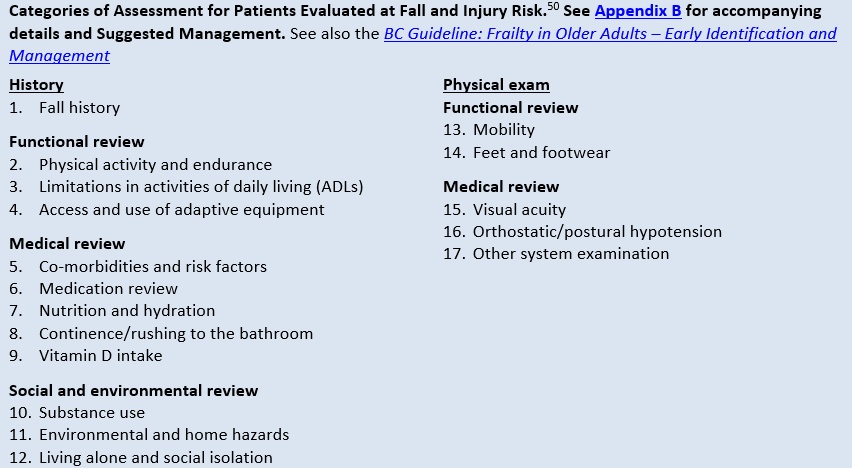Getting The Dementia Fall Risk To Work
Table of ContentsThe smart Trick of Dementia Fall Risk That Nobody is DiscussingEverything about Dementia Fall RiskWhat Does Dementia Fall Risk Do?How Dementia Fall Risk can Save You Time, Stress, and Money.
A loss threat analysis checks to see how likely it is that you will certainly fall. It is mostly done for older adults. The assessment generally includes: This includes a series of questions about your general health and wellness and if you have actually had previous falls or troubles with equilibrium, standing, and/or walking. These devices examine your toughness, balance, and gait (the method you walk).Interventions are recommendations that might lower your threat of falling. STEADI includes 3 steps: you for your risk of falling for your danger elements that can be enhanced to try to avoid falls (for example, equilibrium troubles, damaged vision) to decrease your risk of falling by using effective techniques (for instance, providing education and resources), you may be asked a number of concerns including: Have you fallen in the previous year? Are you fretted concerning dropping?
If it takes you 12 secs or more, it might indicate you are at greater danger for an autumn. This test checks strength and balance.
Move one foot midway onward, so the instep is touching the huge toe of your various other foot. Move one foot completely in front of the other, so the toes are touching the heel of your various other foot.
Little Known Questions About Dementia Fall Risk.
Most drops take place as an outcome of several adding variables; for that reason, taking care of the threat of falling starts with recognizing the factors that contribute to fall threat - Dementia Fall Risk. Some of the most relevant danger elements include: Background of previous fallsChronic clinical conditionsAcute illnessImpaired gait and balance, lower extremity weaknessCognitive impairmentChanges in visionCertain high-risk medicines and polypharmacyEnvironmental aspects can likewise raise the threat for drops, consisting of: Inadequate lightingUneven or damaged flooringWet or slippery floorsMissing or damaged handrails and get barsDamaged or improperly fitted equipment, such as beds, mobility devices, or walkersImproper usage of assistive devicesInadequate guidance of the individuals living in the NF, consisting of those that show hostile behaviorsA effective autumn threat administration program needs a comprehensive professional assessment, with input from all participants of the interdisciplinary group

The care strategy should also consist of treatments that are system-based, such as those that advertise a secure environment (suitable lighting, hand rails, order bars, and so on). The efficiency of the interventions must be examined regularly, and the care strategy changed as required to reflect adjustments in the autumn danger evaluation. Executing an autumn risk management system using evidence-based ideal method can decrease the occurrence of drops in the NF, while limiting the potential for fall-related injuries.
Dementia Fall Risk Can Be Fun For Anyone
The AGS/BGS guideline suggests evaluating all adults matured 65 years and older for autumn threat every year. This testing includes asking people whether they have dropped 2 or even more times in the past year or looked for clinical focus for an autumn, or, if they have actually not fallen, whether they really feel unstable when walking.
People that have actually fallen when without injury needs to have their balance and gait examined; those with stride or balance irregularities must receive extra analysis. A history of 1 autumn without injury and without stride or balance troubles does not warrant additional analysis beyond ongoing annual autumn threat screening. Dementia Fall Risk. A loss danger analysis is called for as component of the Welcome to Medicare examination

The Best Strategy To Use For Dementia Fall Risk
Recording a drops history is one of the high quality indicators for autumn prevention and monitoring. copyright drugs in specific browse around this web-site are independent predictors of falls.
Postural hypotension can frequently be reduced by decreasing the dosage of blood pressurelowering medications and/or quiting medications that have orthostatic hypotension as an adverse effects. Use above-the-knee support pipe and copulating the head of the bed boosted might likewise lower postural decreases in high blood pressure. The suggested elements of a fall-focused health examination are displayed in Box 1.
.png)
A TUG time better than or equivalent to 12 seconds suggests high autumn danger. Being incapable to stand up from a chair of knee height without utilizing one's arms suggests increased fall risk.